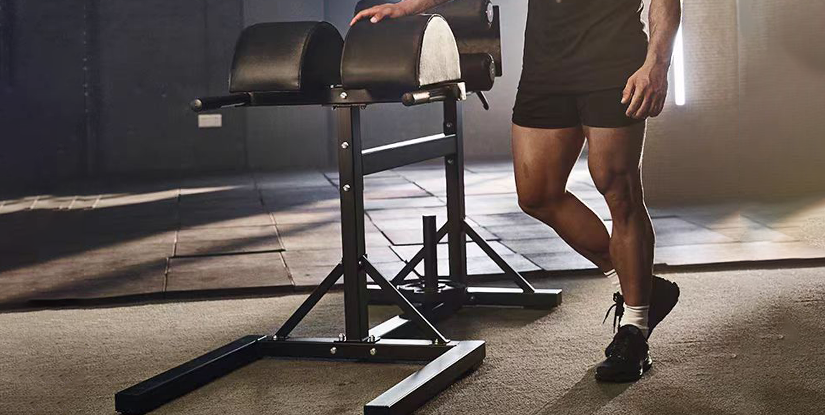Exercise and Fitness Equipment Guide: Selection, Safety, and Maintenance

Understanding Exercise and Fitness Equipment
Selecting the right exercise and fitness equipment is foundational to achieving reliable results, preventing injury, and maximizing training efficiency. Whether outfitting a home gym, selecting commercial-grade units for a studio, or choosing portable tools for travel, an informed approach reduces wasted expense and enhances adherence to training plans.
Categories of Equipment
- Cardio machines — treadmills, elliptical trainers, stationary bikes, rowing machines, and stair climbers. Ideal for improving cardiovascular endurance and caloric expenditure.
- Strength equipment — barbells, dumbbells, kettlebells, resistance bands, and selectorized machines. These enable progressive overload and muscle hypertrophy.
- Functional and mobility tools — medicine balls, slam balls, battle ropes, suspension trainers, foam rollers, and mobility bands. Use these for multi-planar movement, core integration, and recovery.
- Recovery and monitoring — massage guns, compression devices, heart rate monitors, and wearables. These support data-driven recovery and training adjustments.
- Specialized apparatus — squat racks, power cages, Smith machines, and plyo boxes. Necessary for advanced strength programming and safety during heavy lifts.
Choosing Equipment: Key Considerations
- Training goals — prioritize cardio machines for endurance goals, strength tools for hypertrophy and power, and functional items for sport-specific performance.
- Space and layout — measure available space and allow clearance for movement. Foldable or compact machines suit limited spaces, while commercial setups require dedicated floor plans and appropriate flooring.
- Budget and durability — differentiate between entry-level consumer units and commercial-grade equipment. Consider warranty, build materials, and expected frequency of use.
- Adjustability and progression — choose equipment offering incremental load or resistance adjustments to match long-term progression plans.
- Safety features — look for emergency stops, secure locking mechanisms, non-slip surfaces, and stable bases for free-weight stations.
Home Gym vs Commercial Gym Equipment
Home gym equipment emphasizes compactness, multi-functionality, and cost-effectiveness. Commercial equipment is engineered for continuous, heavy use and typically includes reinforced frames, higher weight capacities, and extended warranties. When selecting for a commercial setting, prioritize certified manufacturers and compliance with local safety standards.
Programming with Equipment
Equipment should align with periodized plans. A balanced program typically includes:
- Cardiovascular conditioning using interval or steady-state sessions on cardio machines.
- Resistance training employing compound lifts and accessory exercises to target major muscle groups.
- Mobility and stability work with bands, rollers, and bodyweight drills to reduce injury risk and improve performance.
- Recovery strategies including low-intensity active recovery and the use of recovery devices to maintain training frequency.
Maintenance and Longevity
Regular maintenance extends equipment life and preserves safety. Best practices include:
- Cleaning sweat and debris to prevent corrosion and wear.
- Lubricating moving parts on treadmills and ellipticals as recommended by the manufacturer.
- Inspecting cables, pulleys, and welds on strength equipment for signs of fatigue.
- Re-tensioning or replacing worn belts and chains on cardio machines.
- Adhering to weight limits and recommended load increments for free weights and racks.
Safety and Ergonomics
Ergonomic setup reduces the risk of overuse injuries. Ensure correct machine sizing and user-adjustable settings. For free-weight training, use collars, spotters, or safety pins in racks. Provide clear signage for proper use when equipment is shared in a commercial or community setting.
Technology Integration and Tracking
Many modern machines integrate with apps and wearables to track cadence, power output, heart rate, and training load. Leverage these metrics to inform progressive overload, monitor recovery, and tailor sessions to individual capability. For commercial facilities, offering connected experiences increases member engagement and retention.
Cost-Effective Solutions
For budget-conscious users, prioritize a few versatile tools: adjustable dumbbells, a quality kettlebell, resistance bands, and a robust bench. Purchased thoughtfully, these elements can support comprehensive programs from strength to mobility without a large footprint.
Environmental and Storage Considerations
Choose materials resistant to humidity and temperature changes if equipment will be stored in garages or non-climate-controlled areas. Install protective flooring to minimize impact noise and protect both equipment and subflooring.
Conclusion
Exercise and fitness equipment are investments in health and performance. Evaluate needs against space, budget, and long-term goals. Prioritize durability, adjustability, and safety. With appropriate selection and consistent maintenance, equipment can support progressive, measurable improvements while minimizing injury risk.
Frequently Asked Questions
- Q: What is the best starter equipment for a home gym?
A: Adjustable dumbbells, a sturdy bench, resistance bands, and a kettlebell provide versatile options for most programs. - Q: How often should treadmill belts be lubricated?
A: Follow the manufacturer, typically every 3 to 6 months depending on usage and belt condition. - Q: Are cardio machines or free weights better for weight loss?
A: Both are effective; combine cardio for caloric burn with resistance training to preserve muscle and support metabolism. - Q: How can I ensure safe heavy lifting at home?
A: Use a power rack with safety pins, practice proper technique, and consider a spotter for maximal lifts. - Q: What maintenance is critical for strength racks?
A: Regularly inspect bolts, welds, and coatings; tighten fasteners and replace damaged components promptly. - Q: Do commercial machines need different warranties?
A: Yes, commercial-grade equipment typically has specialized warranties reflecting higher usage demands. - Q: Can resistance bands replace weights?
A: Bands are effective for many movements and mobility work but may not fully replicate heavy compound loading for maximal strength gains. - Q: How should equipment be cleaned in shared gyms?
A: Use EPA-approved disinfectants, clean after each use, and maintain a regular deep-clean schedule. - Q: When should I upgrade my equipment?
A: Upgrade when equipment limits your progression, shows structural wear, or when usage frequency exceeds the product's intended capacity.

